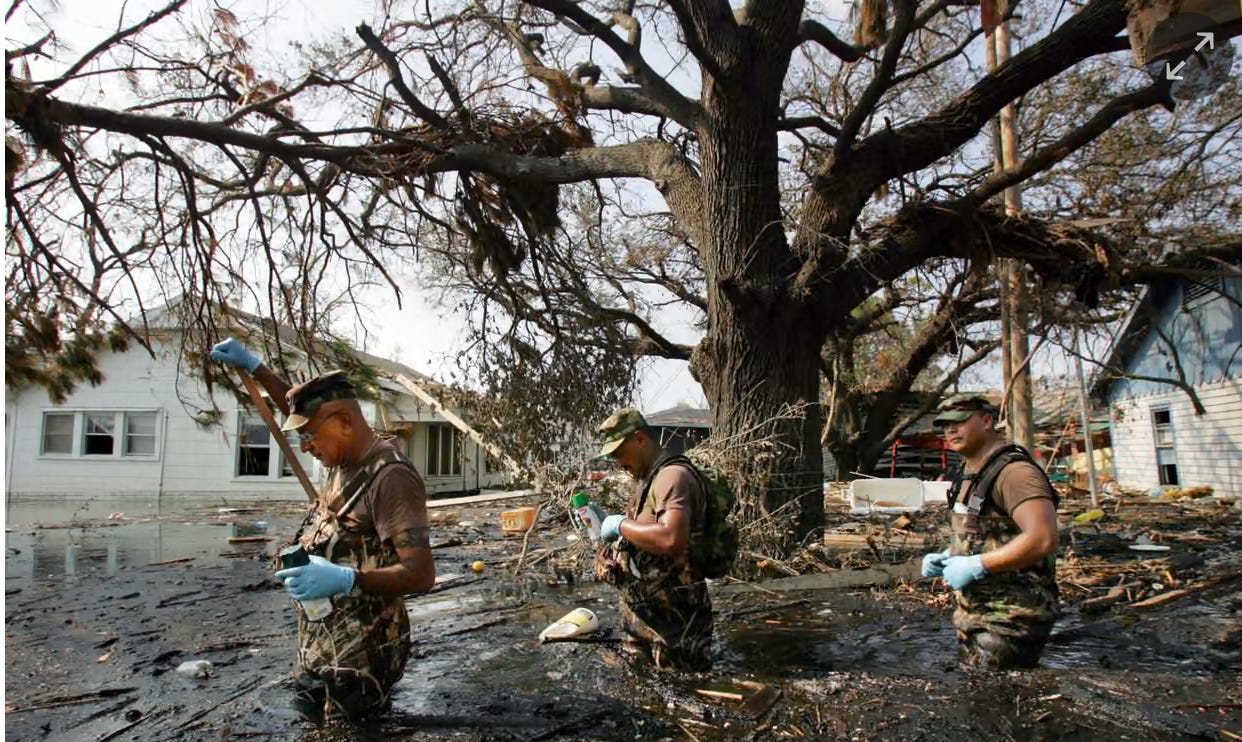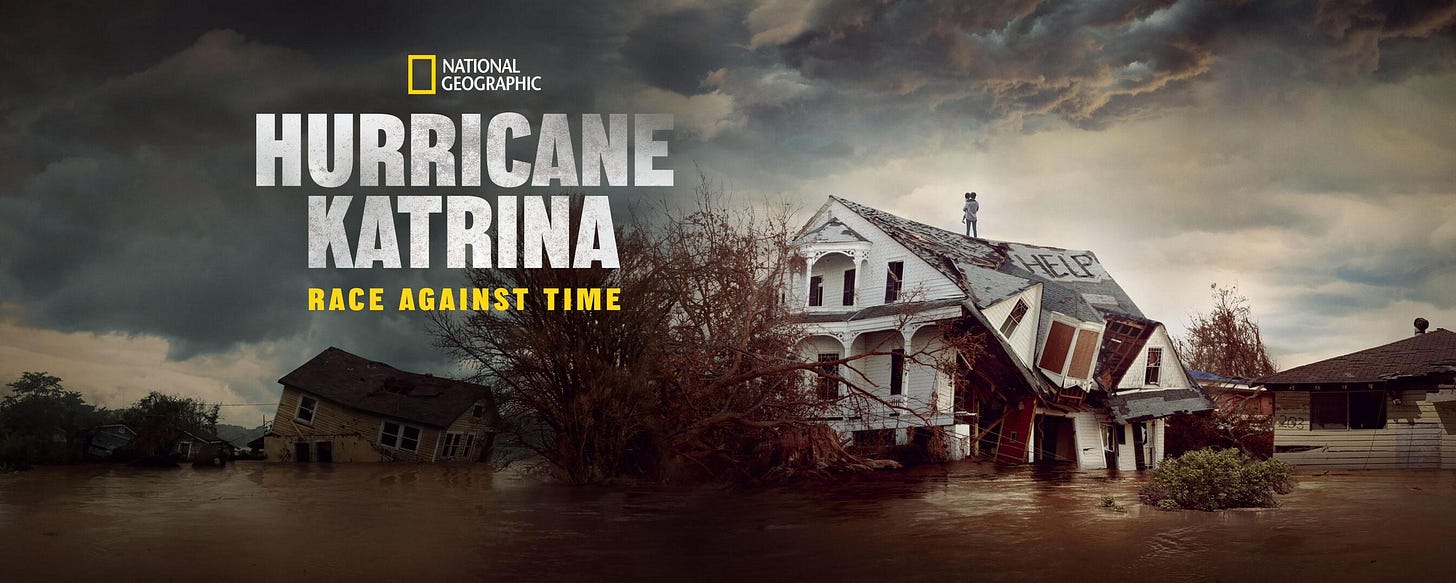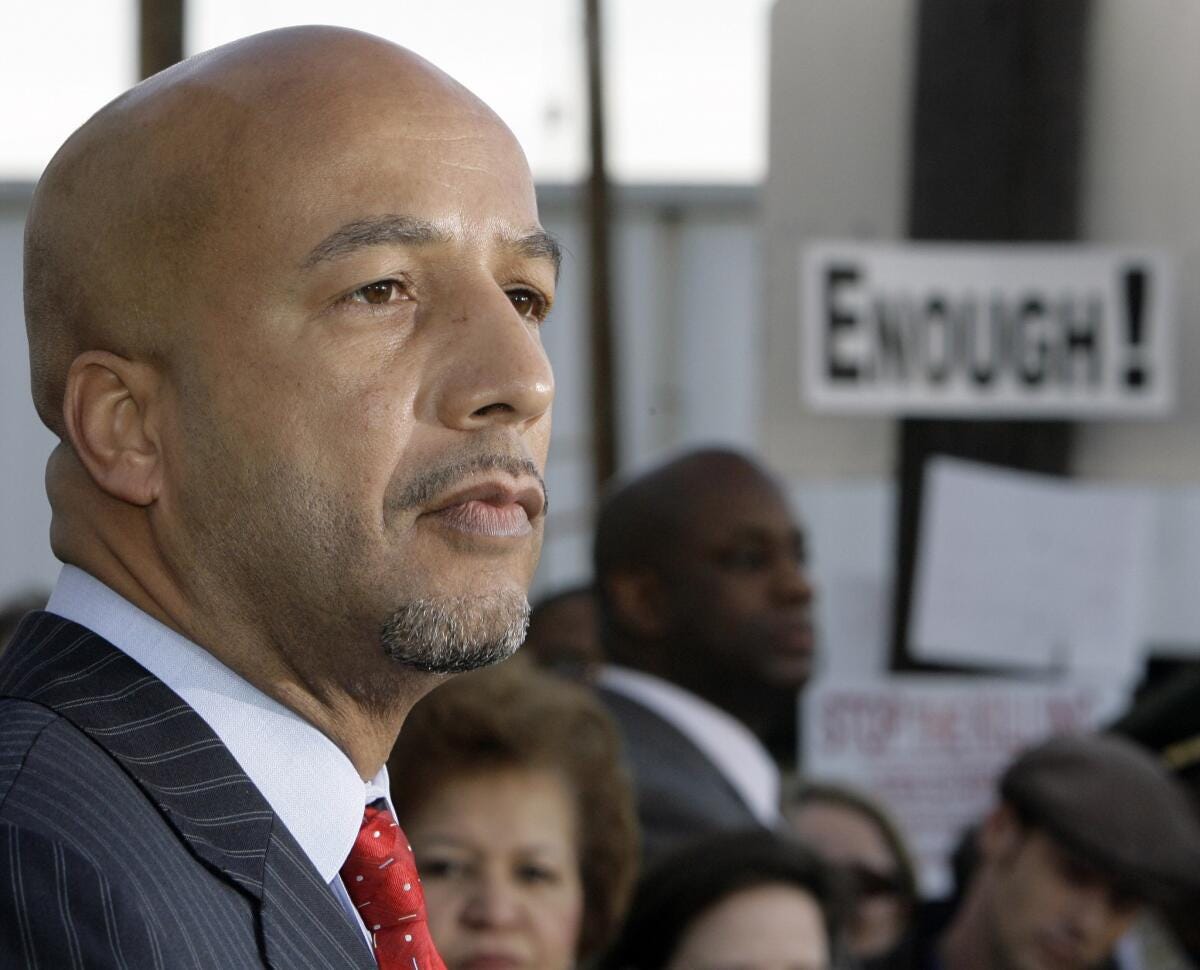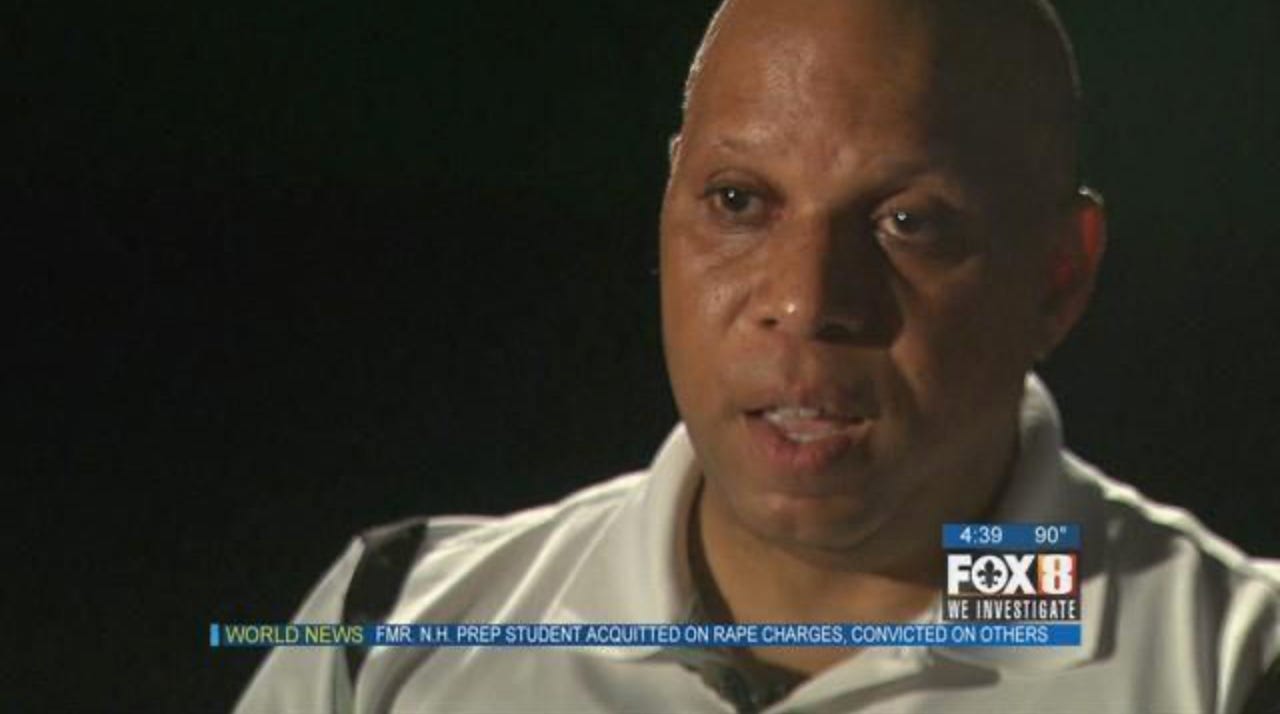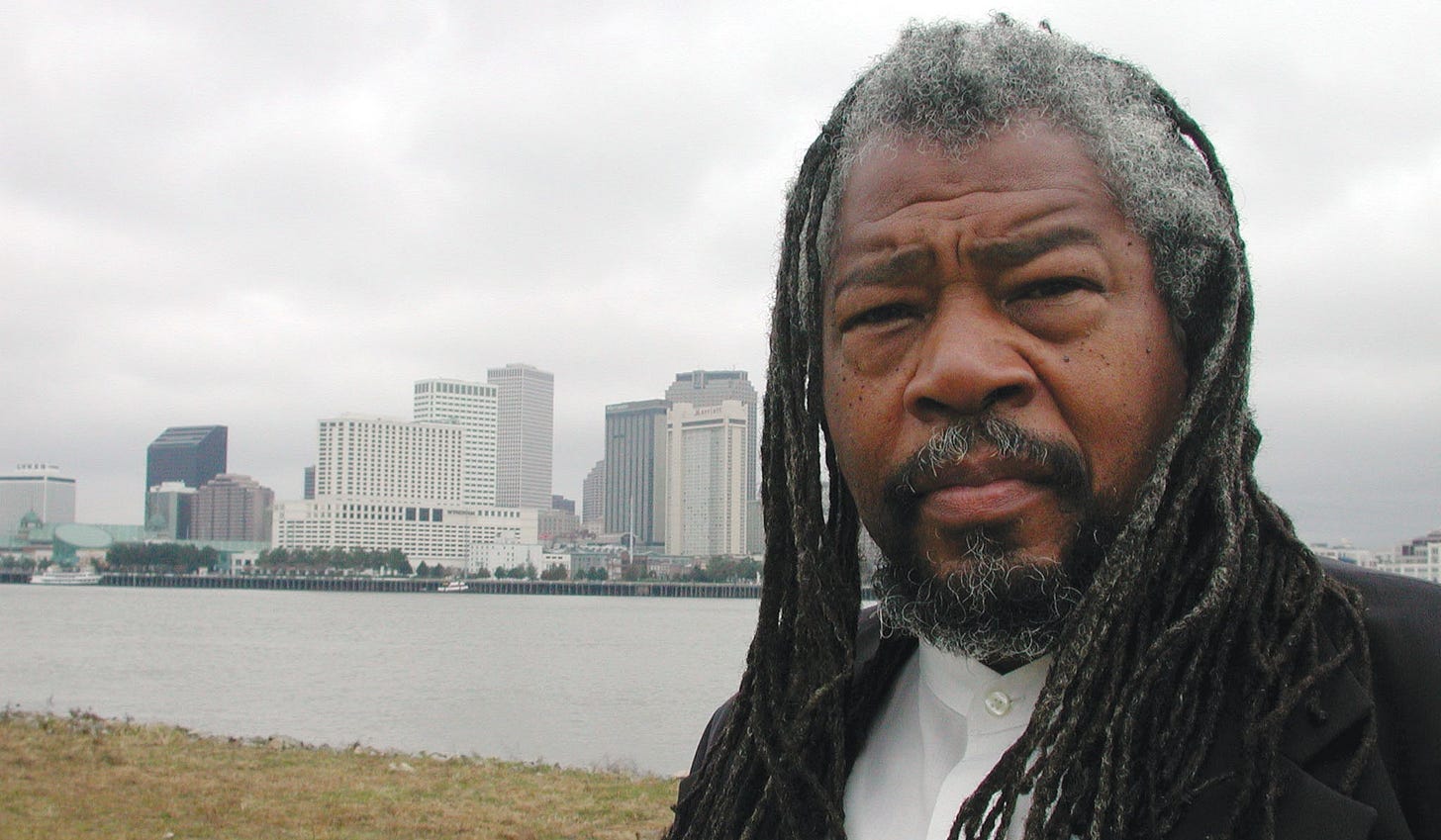Hurricane Katrina, twenty years on
Rhodes Napier
Tomorrow will mark twenty years since Hurricane Katrina hit New Orleans on August 29th 2005. In the intervening period, the tragedy and the events surrounding it have become part of the canon of African American racial myth making - obfuscating the criminal acts and rioting that took place opportunistically in the aftermath of the disaster. One that accuses White Americans of concocting a media hoax about rioting and forming militias to hunt down and murder black people.
Like so many blood libels that have been made towards Whites in America, like the idea that White American women fabricated African American rapes which caused innocent black men to get lynched, it is essentially unchallenged in the media and the academy. In Britain there are parallels which we will discuss later, most pertinently the burning of Grenfell tower, a tragedy which has been politically exploited by our own brand of African nationalists to present the British state as genocidal.
Katrina occupies a similar place in my childhood memories as the Boxing Day tsunami; a distant, tragic but essentially apolitical event which permeated into a background of global going-ons. I cannot claim any even tangential connection to New Orleans. My experience of America has been limited to the Mid West, Appalachia and various characterless multi-ethnic megapolises. New Orleans only connotes vague images of Mardi Gras, Cajun culture and southern Gothicism, a sort of erotic (and I assume probably incarnate) pastiche of swampy bordellos and sexual licentiousness.
I do not claim that I was say is unique, although it has been a struggle to find dissident sources which give a more impartial spin on events (or at least air White perspectives on the racial tensions which manifested in the post-disaster disorder). It is necessary for revisionists to combat the particularly egregious propaganda as represented in programs such as National Geographic’s 'Race Against Time'. Otherwise the motives of groups like the Algiers Point militia will remain maligned and obscured, like that many of other White vigilantes who have acted in self-defence throughout the history of the contemporary West.
It is worth providing an overview of Katrina. As a category 5 hurricane it wrought devastation on New Orleans, killing over 1,800 people and costing $125 billion. It overwhelmed the neglected levee system, which was comprised of piecemeal and sometimes incomplete redevelopments which had taken place over the course of the 20th century. 80% of the city, including many predominantly black urban developments which had expanded into below level swamp land in the post-war period, were flooded, leading to the ultimate displacement of nearly a quarter of a million people. Evacuation orders were issued only 20 hours before landfall, leading to a haphazard exodus of those who could exit in time and the internal displacement of the remainder of residents to the higher ground areas of the city. In particular, Caesar’s Superdome became an infamous site of impromptu refugees, eventually holding up to 20,000 people with no meaningful sanitation system and a precarious system of rationing.
The city was permanently partially depopulated; as of 2024 it is host to only 362,000 people as opposed to its original 484,674 in 2000. The black population in particular bore the brunt of this displacement due to its concentration in the Lower Ninth Ward and New Orleans East. Its share declined by 121,000 leaving it at 56% as opposed to its earlier 67%. While the white population declined in absolute numbers its share increased from 26.6% to 32%. In spite of the then mayor Ray Nagin's comments that God intended for the city to remain a 'chocolate' one and that Mexicans mustn't be allowed to take reconstruction jobs, the Hispanic population also grew considerably to around 10% due to the of migration of construction workers.
Many black residents have resettled in other parts of Louisiana and in particular Texas, and have failed to return either because of newly established lives or because the redevelopment of damaged areas has denuded the city of what was essentially quasi-slum housing.
It is undeniable that New Orleans was poorly led in the run up to, during and after the disaster that was Hurricane Katrina. However, the narrative that was expounded, that of white indifference to non-white welfare, is basically unsubstantiated. Katrina has been described as an ‘unnatural disaster’, as the late Manning Marble (a black academic at Columbia) put it:
“The denial by white America of the reality of Black suffering is essential to the preservation of white hegemony.”
As banal as it sounds the reasons for the poor response were multifaceted. New Orleans' levee system, which was so quickly overwhelmed, was incomplete to a mixture of factors detailed in an American Society of Civil Engineers report from 2007; complacency, lack of administrative centralisation and frequent legal challenges to development, particularly in the course of the construction of concrete levees in the 1990s. The erosion of citrus trees in the swamp lands also reduced New Orleans' wetland periphery, meaning that the direct impact of hurricanes could not be slowed down to the same degree as past ones had. The equivocation in the run up to the evacuation order was due to an assumption that Katrina would not develop into a category 5 storm in its early stages and also because there was no civil contingency plan involving the full scale movement of the population.
Ray Nagin was a Democrat, the third consecutive black mayor since the late 1970s (Nagin is currently serving a 10 year federal prison sentence for corruption related offences). Rather than New Orleans being an enclave of apartheid, it has been, like other urban areas dominated by ethnic political machines, mismanaged by black political governance, which principally has been to the detriment of black voters. The mixture of short and long term factors produced a situation, which once set in motion, could not be significantly alleviated. The unplanned movement of so many people of course lead to a total breakdown of law and order.
It is the left wing narrative construction of the civil breakdown, rather than of the original mismanaged disaster response, which is most malign. There was at the time widespread reports of looting, murder and sexual violence by the media, including the international press (BBC), which has subsequently been deemed baseless due to the fact that these reports did not always result in corresponding prosecutions. Both Eddie Compass, the then New Orleans Police Department chief, as well Mayor Nagin claimed that there were widespread reports of sexual assaults occurring in the Superdome. Both appeared on the talk show Oprah where, per the New York Times, they said:
Chief Eddie Compass said of the Superdome: "We had little babies in there, some of the little babies getting raped." Mayor C. Ray Nagin concurred: "They have people standing out there, have been in that frickin' Superdome for five days watching dead bodies, watching hooligans killing people, raping people."
Its seem to be lost on many commentators that in the broader context of societal breakdown and widespread loss of life, not all crimes would have been (or actually could have been) reported to the police in the recovery period. Undoubtedly there were false rumours such as reports of sniper attacks on rescue missions or increased gang activity, but the ubiquitous claims of current historiography, that this was purely a form of media sensationalism, seem equally implausible.
A good place to start is the aforementioned 'Hurricane Katrina: Race Against Time'. While the first and second episodes are relatively dispassionate dissections of the events in the run up to and during the initial stages of Katrina, there are inauspicious signs early in the program that this is a socio-racial commentary. The first person to actually be interviewed is Malik Rahim (who is presented as a 'community activist'). Malik in fact is a former Black Panther militant and black separatist with a long history of firearm offences related to his political militancy, having been involved in shootouts with the police.
He also served a five year prison sentence for armed burglary while living in LA. He features prominently throughout the program, and is probably the most common recurring interviewee. There is also a conspicuous absence of any White interviewees outside of administrative officials. While it is true that blacks bore the brunt of displacement, there were White refugees, particularly in the super drome, whom one interviewee describes ominously as 'sticking out like a sore thumb'. The narrative presented is fundamentally Afrocentric. It seeks to minimise the perspectives of White working New Orleanians from the outset.
Where the show becomes more charged is in its discussion of the issue of looting and how the media presented it. This objectively existing phenomenon is presented uncritically as a case of survivalists eking out existence in the context of widespread food shortages. While there are some allowances made regarding 'trouble makers' most looters are presented as simply trying to survive. It is hard to gauge the authenticity of this account because it really begs the question of whether really all looting, which occurred throughout large parts of the semi-abandoned city, had no element of commercial opportunism to it at all.
Similarly the accounts of the security situation vary and are contested. The black Eddie Compass emphasises in his own words the existing threat to officers from gun shots. While the reports of sniper fire directed towards rescue craft maybe were due to the misconstruing of attempts by survivors to gain attention, there were undoubtedly weapon exchanges on the outskirts of the super dome.
One police officer, the also black Kevin Thomas was shot in the head while confronting looters in the Algiers suburb of New Orleans. Its also worth noting that it was black officials who tended to emphasise the severity of the situation, with Ray Nagin calling for martial law, and that many of the rumours of rape and murder started amidst black civilians confined to the Superdome. While arguably the media was sensationalist in its picking up of these stories, it's hardly a binary case of White America opportunistically vilifying a desperate black population.
This leads to the final issue of significance, that of the purported formation of White vigilante groups. Most of these focus on allegations around the Algiers Point neighbourhood of the Algiers suburb. Algiers Point is predominantly White within the poorer predominantly black district. The formation of an Algiers Point militia is alleged by a variety of left wing writers. It's difficult to find first hand accounts of its existence from the people constituting it, nor their rationales and anxieties for possibly having taken to arms to defend their neighbourhood. Its actions extended to both the manning of checkpoints and pre-emptive patrols in surrounding black environs.
The only journalist who has spent time interviewing its members is from NPR, who claims that the white vigilantes had experienced crimes including car jackings. There are a similar number of reports in various anarchist and Afrocentric sites of white militias forming. Interestingly the Malik Rahim interviewed in the the documentary took part in armed counter patrols. There's a revisionism through inference, in which you have to read these sources to attempt to glean the reality of the situation which Whites living on exit routes were facing.
Regardless of whether the extent of looting was exaggerated, it was undoubtedly the case that Whites had experienced criminal victimisation. The leftist perspective is to constantly question whether self defence is proportionate; that you should be willing to accept a degree of theft and personal insecurity as a trade off for the human rights of existing and potential criminals. This is the rationale which underpins almost all cause célèbres of the American left; be it gun control or integration in schools and housing. However there is no reason why you should have to concede to this value judgement. In my view it's entirely reasonable for people to arm themselves to the teeth to prevent entirely predictable misfortunes. The Whites of Algiers Point had lived on the periphery of racialised criminality for decades, and would have been alert to the possibilities which could face them. New Orleans is the most dangerous city in America going by homicide rate, with a murder rate per capita (54.4) far higher than that of Baltimore (35.3), the setting of the HBO show about black gangs - and even Johannesburg (41.3), a failed city in a failed state.
Ultimately, Katrina was a genuine humanitarian tragedy, a product of cross partisan failings. The fallout of the original landfall could have been significantly lessened by investment in levee infrastructure, while a developed humanitarian strategy for population movement could have prevented the chaos in its aftermath. The images of soiled people, both white and black, sequestered in sports stadiums, is harrowing to even someone far removed from the situation twenty years on.
But what is the problematic about the narrative propagated now is it's remorseless account of racial victimisation. The crime panic was not baseless and nor did it stem from White anxiety, but rather from the black population's own self reports of intraracial victimisation. The militarised response, even if heavy handed, most certainly did pre-empt further breakdowns in law and order. And finally the Whites of Algiers Point were not psychotic race baiters, but people defending their lives and property in a state of anarchy.
We of course can draw analogies to the left's appropriation of the Grenfell tower fire in the British context. While the conditions for Grenfell were created through bureaucratic oversights related to its refurbishments during 2014-16, it was treated as a structural indictment of Britain's purportedly inequitable society. In spite of the fact that inquiry found no evidence that ethnic or race related motives contributed to the beginnings of the fire or aggravated its aftermath, it was a canard at the time that the fire fighters' (in reality diligent) response had been impacted by ''unconscious bias''. These uncannily parallel accusations levelled at first responders during the Katrina disaster. The purpose of the left's engagement with these crises is not primarily motivated by humanitarian considerations or even a desire to rectify the conditions which created them, but rather to mobilise them as political cudgels to brow beat White majorities.


